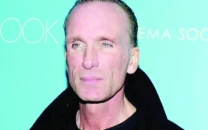The caveman diet — back to basics
The nutritional plan of the hunter-gatherer society.

The nutritional plan of the hunter-gatherer society. DESIGN: ESSA MALIK
By now the West has acquired a reputation for producing something akin to a fashion-show of diet plans. Over the last few decades, several ‘revolutionary’ diets have emerged, enjoyed varying levels of popularity, and eventually faded out. Recently, however, emerged a nutritional plan that is not showing any signs of dying. In fact, it has taken the West by storm, and is rapidly developing into a lifestyle altogether. It is known as the Paleo or ‘caveman’ diet.
What is the Paleo diet?
According to, arguably the most pivotal figure in the world of Paleo, Dr Loren Cordain, the Paleo diet incorporates eating food that human beings thrived on as hunter-gatherers, starting from about 2.6 million years ago up till the Agricultural Revolution around 8000 BCE, a period known as The Paleolithic Era. This includes meat, fish and seafood, fruits, vegetables, seeds and nuts. Excluded are dairy products, grains (wheat, corn etc.), legumes (beans, daal, etc.) and all refined and processed foods including white sugar, refined salt, processed and vegetable oils, alcohol and various synthetic additives found in commercial foods.
The reason for Paleo
In a paper titled ‘Origins and evolution of the Western diet: health implications for the 21st century’, Cordain and fellow research-scientists postulated that the human genome, which has been evolving its natural course over millions of years, has not adapted to the rapid dietary changes brought about first in the Agricultural Revolution and later-on the Industrial Revolution. This had led to several ‘fundamental alterations’ in our diets — mostly immediately that we consume foods with unprecedented ‘glycemic loads’ (think: blood sugar) and eat too little ‘good fats’ and too many ‘bad fats’ due to progressive reliance on farm-raised animals in place of wild game and grass-fed meat.
There is evidence to link these changes, or ‘evolutionary discordance’, with what are known as ‘diseases of civilisation’ — including obesity, stroke, diabetes, various type of heart disease and hypertension — which repeated studies have shown to be largely absent in primitive, modern-day hunter-gatherer societies.
Ever since, tens of thousands of people (a very conservative statistic!) have ‘gone Paleo’, the diet has acquired synonymy with fat loss, lean muscle gains and reversing disease.
Even then, the Paleo Diet, has not been without controversy, in part due to disagreements over the exact dietary patterns of humans in the Paleolithic Era. While evolutionary scientists debate furiously on these technicalities, leading health researchers in the Paleo world such as Chris Kresser are using the diet’s premise to construct a framework for a healthy, real-food diet and going ‘Beyond Paleo’. For Chris Kresser, ‘The fact that a food did not exist in the Paleolithic area is not alone a justification for not eating it.’ As such, his approach, a ‘paleo template’, recognises the role of dairy as one of the most nutritionally powerful foods, and welcomes it for those who can tolerate dairy. Similarly, other experts such as Robb Wolf, give the green-light on certain supplements, adopting the slogan: ‘Paleo is a logical framework applied to modern humans not a historical reenactment.’ The routine consumption of roots and tubers (yams, sweet potatoes, taro etc.) has also found a home in Paleo, as has the use of copious amounts of delicious fats such as ghee and butter in addition to olive oil, coconut oil and other natural oils.
Grains and legumes, however, are believed to contain highly irritating compounds such as gluten and lectins, while also being very weak nutritionally compared to conventional Paleo foods, and so unfortunately remain outside of Paleo until further notice or exoneration. There is no room in the diet for processed foods and vegetable oils whatsoever, although some experts allow for ‘cheat days’ when you can eat whatever you want.
So while the conventional medical establishment is still advising people to avoid butter and limit meat, the Paleo world is releasing one tailor-made cookbook after another such as ‘Paleo for Athletes’ and ‘nom nom Paleo’ [hyperlink: http://nomnompaleo.com/] to the delight of those who have either gone Paleo or taken inspiration from it and are living healthy and disease-free.
Speaking of delicious Paleo recipes, here’s a sample: dates stuffed with coconut oil. And speaking of healthy lifestyles, stay tuned for ‘The Caveman Lifestyle.’
The author is involved in a project called Scholars By Profession which intends to pioneer introducing graduate-level research to Pakistan. Please visit their Facebook page for further details.
Published in The Express Tribune, December 31st, 2012.
Like Life & Style on Facebook for the latest in fashion, gossip and entertainment.



















COMMENTS
Comments are moderated and generally will be posted if they are on-topic and not abusive.
For more information, please see our Comments FAQ